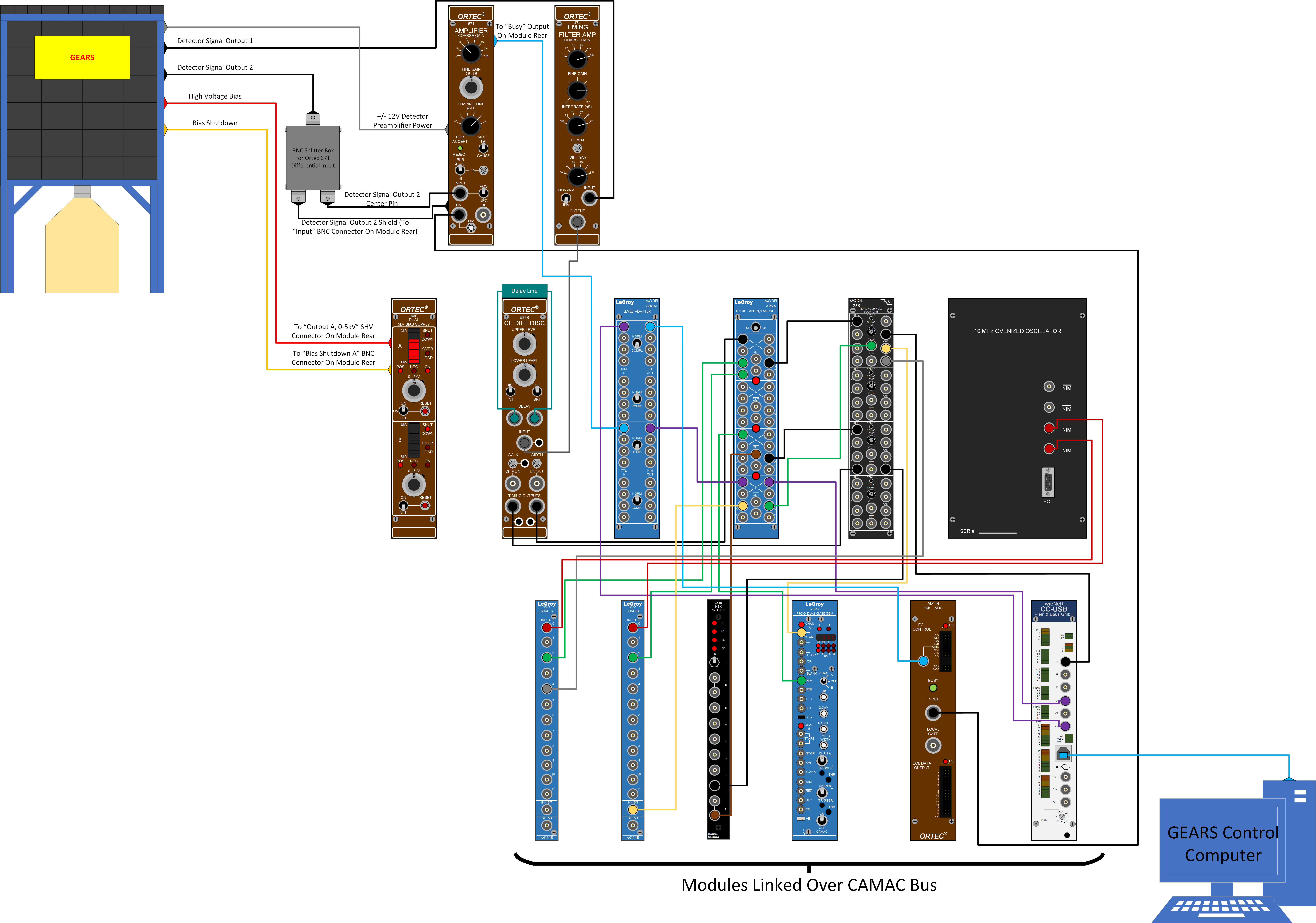Trigger and Linear Signal Derivation
The CAMAC DAQ system requires both a slow linear signal to digitize as well as a fast trigger signal to prompt the analog to digital converter (ADC) to run. These two signals are taken from the two BNC signal outputs of the detector preamplifier, yielding a system that can be broken down into two signal paths: The slow (~10 us), linear signal path and the fast (~500 ns) trigger path. A diagram of the complete DAQ system can be seen below in Figure 1.

Linear Signal
The linear signal path begins, as outlined above, with the BNC output from the detector preamplifier. From here, the single BNC connection is split into 2 BNC connections: The detector center pin connection is sent to one BNC connector, and the detector shield (which is isolated from the DAQ ground) is sent to the other BNC connector. The shields of the now split BNC connectors is coupled to the DAQ ground, meaning that the detector linear signal now functions as a differential signal.
This is done to take advantage of the differential input of the ORTEC 671 Amplifier that amplifies the linear signal in preparation for digitization (The settings for which can be seen in Figure 1). In doing so, a common mode rejection ratio (CMRR) of >1000 is applied to the input signal, greatly reducing any noise that is picked up over the connection from the preamplifier to the amplifier. From the ORTEC 671, the amplified linear signal is sent to an ORTEC AD114 16K ADC for amplitude measurement and digitization upon receiving a trigger.
Trigger Signal
In the case of the trigger signal, small amounts of electrical noise are inconsequential to the DAQ system and as such the trigger signal is taken as a single input from the detector preamplifier. To begin, the signal is sent to an ORTEC 474 Timing Filter Amplifier (TFA) that generates a fast negative polarity pulse. This pulse is then sent to an ORTEC 583B Constant Fraction (CF) Differential Discriminator, which generates a negative NIM logic pulse (the trigger signal) when the input signal is above a user-set threshold. This is done so that the system does not trigger on the small amount of electrical noise present on the input, and only triggers on valid signals from the GEARS detector. Both identical timing outputs from the ORTEC 583B are used in the trigger processing stage of the DAQ, which is further discussed on the Trigger page.
Note: A constant fraction discriminator is used explicitly because the timing of the NIM logic output signal is independent of the input pulse amplitude, which in this case is dependent on the energy of the gamma ray interacting with the HPGe crystal. Should a conventional leading-edge discriminator be used, the timing signals used in the trigger path would develop a dependence on the energy of the detected gamma ray.